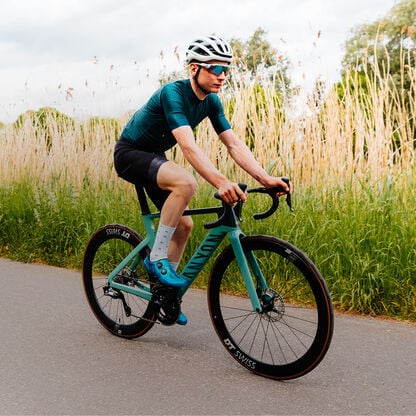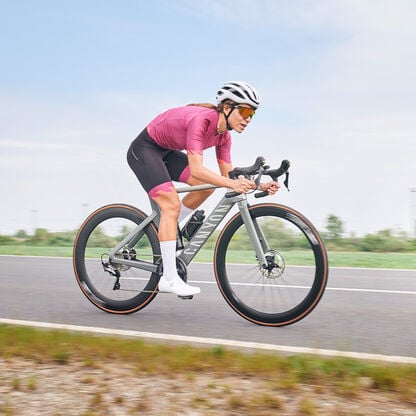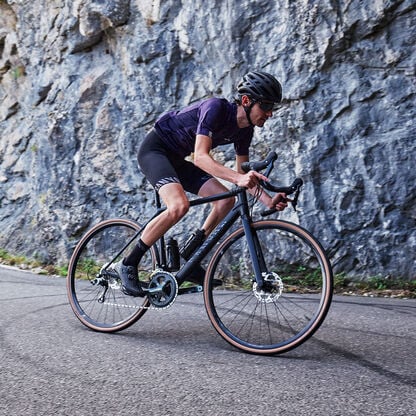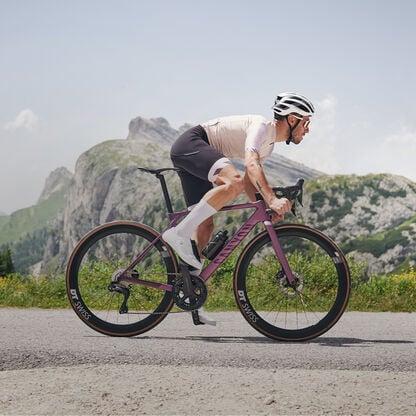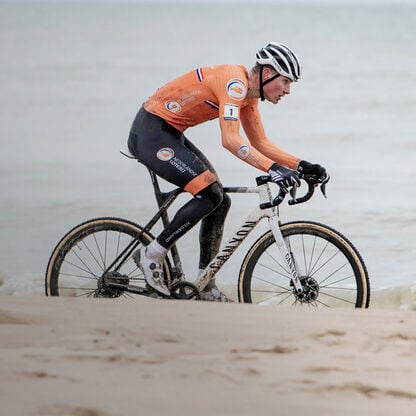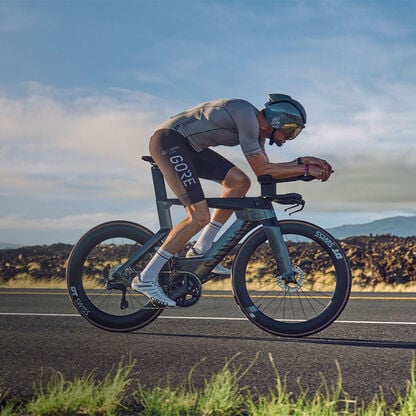Tour de France Femmes 2025: news & race route preview
Stay up-to-date with the latest news, and route details for the Tour de France Femmes 2025. Get all the updates on the highly anticipated women's cycling event.
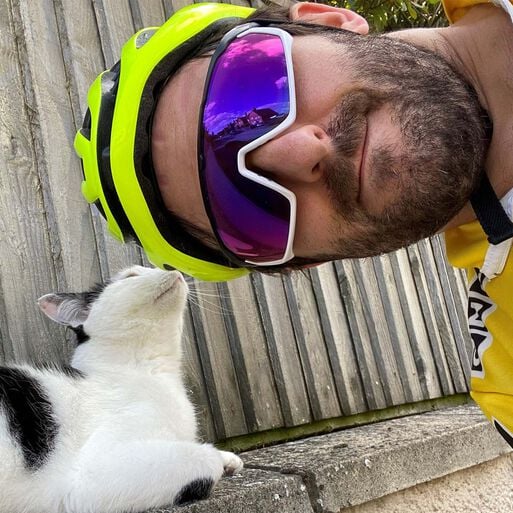

The Tour de France Femmes avec Zwift is now in its fourth year and has firmly established itself as the biggest race in the women’s calendar and as a showcase event that sits alongside the men’s Tour de France.
The now nine-day stage race returns this summer with the best female riders in the world set to compete for the coveted yellow jersey and the chance to stand on the podium. Just like in the men’s race, there are also jerseys for the Queen of the Mountains, the best young rider, the points classification leader, and an award for the best team in the race. Our complete Tour de France Femmes guide will take you through every stage, highlight all the key riders, and explain how you can watch and follow along this summer.
Contents
Tour de France Femmes 2025 in numbers:
- Dates: July 26 to August 3
- Total distance: 1,165km
- Total distance climbed: 17,240m
- 2 summit finishes
- 3 hilly stages
- 3 sprint/flat finishes
- 0 time trials
- 22 teams competing
When is the Tour de France Femmes 2025?
The 2025 Tour de France Femmes overlaps with the men’s race by two days this year, with the women’s race running from July 26 to August 3. The Grand Départ takes place in Brittany, and the final stage occurs in Châtel, Alps, where the winner of the fourth edition is set to be crowned after what promises to be nine amazing days of racing that showcase the best of women’s cycling.

Tour de France Femmes History
The roots of the modern-day Tour de France Femmes can be traced back to the 1950s, but it wasn’t until the 1980s that female riders had their own consistent version of the Tour de France. The race was shelved, however. Towards the end of the decade, the Grande Boucle Féminine Internationale and Tour Cycliste Féminin were held during the summer months, but they had no direct link to the men’s Tour de France.
In 2014, La Course, a one- or two-day event held in conjunction with the men’s Tour de France, was formed. This helped lay the foundations for what was to come with the Tour de France Femmes starting in 2022, with the race following on directly from the men’s race, with a start in Paris.
Annemiek van Vleuten (Movistar Team) won the final two stages of that year’s race and became the first overall winner in the process, as she won all three Grand Tours in what was a history-making season for her, her team, and, of course, Canyon. That same year, Kasia Niewiadoma, also on a Canyon, would finish third overall in the Tour de France Femmes, providing a clear sign of what was to come in the future.
In 2023, van Vleuten finished a creditable fourth in her final appearance in the race, while the 2022 runner-up Demi Vollering (SD Worx) claimed the win. Niewiadoma (Canyon-SRAM) won the polka-dot Queen of the Mountains jersey while placing third overall for the second year in a row.
Then in 2024, Niewiadoma won the Tour de France Femmes for the first time in her career, capping an incredible performance that saw the CANYON//SRAM zondacrypto rider take the coveted yellow jersey on the road to Amnéville. She would hold the race lead right through the remaining few stages, even surviving a thrilling battle with Demi Vollering on the slopes of Alpe d'Huez, with Niewiadoma winning the race by just four seconds
Who are the main 2025 Tour de France Femmes contenders?
Kasia Niewiadoma will return to defend her crown after last year’s monumental success that saw her hold off former Demi Vollering. The Dutch rider will likely start as the rider to beat but Niewiadoma has shown what’s possible when her form is right and the stars align.
Movistar will start with Liane Lippert and Marlen Reusser as potential podium contenders, while Anna van der Breggen and Lotte Kopecky will lead the line for highly competitive SD Worx-Protime.
Paris-Roubaix winner Pauline Ferrand-Prévot cannot be ruled out from making a GC challenge for Visma-Lease a Bike, and Elisa Longo Borghini (UAE Team ADQ) will be hoping to mount her own challenge for the yellow jersey.
Pauliena Rooijakkers (Fenix-Deceuninck) was a surprise third overall last year and her consistency in the mountains could once again put her in contention for another impressive result. Rooijakkers teammate, Puck Pieterse, who won a stage and claimed the white jersey last season is another candidate for the podium. The Dutch rider has already tasted success in the Spring Classics this season, winning La Flèche Wallonne Féminine ahead of Vollering in April.
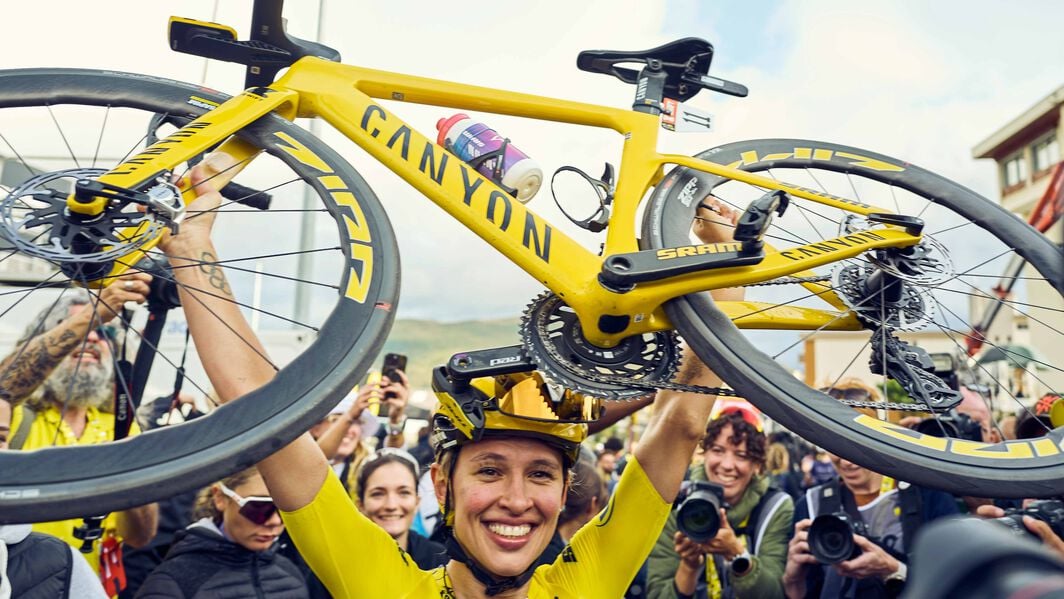
The Tour de France Femmes Route
All nine stages of this year’s Tour de France Femmes will have fans on the edge of their seats with a balanced route that provides opportunities for all types of riders and styles of racing. The sprinters, climbers and puncheurs will race aggressively in what should be another magnificent edition of the race. The race organisers, ASO, have once again created a route that should mean that the battle for the yellow jersey goes down to the wire.
Stage 1: Vannes to Plumelec, 79km
The opening stage of the 2025 Tour de France Femmes, from Vannes to Plumelec, might only be 79 km long, but it’s packed with climbs that will test even the best GC riders and pure climbers in the race. None of the four ascents are long, but the short, punchy nature of the climbs, coupled with how fresh and on edge everyone in the race will be, should ensure a frantic few hours of racing. First, the riders take on the Côte de Botségalo (800 m at 5.3%), but it’s the three times over the Côte de Cadoudal (1.7 km at 6.2%) that will challenge the riders the most. The final ascent of the Cadoudal is at the finish, meaning the sprinters will miss out, but a handful of GC contenders could certainly pull away from their rivals. Expect fireworks from the get-go!
Stage 2: Brest to Quimper, 110km
Stage 1 of the Tour de France Femmes will have created time gaps, even between some of the best riders in the world and that momentum should continue on stage 2, a 110km test between Brest and Quimper, with the peloton tackling another batch of climbs, starting with theMenez Quelerc'h (3km at 6.2%), and followed by the Côte de Locronan (800m at 8.9%), and two trips up the Côte du Chemin de Troheir (1.1km at 5.7%). Just like on stage 1 there’s another uphill finish that will suit the punchy climbers.
Stage 3: La Gacilly to Angers, 162km
Stage 3 from Angers will finally provide an opportunity for the sprinters in this year’s Tour de France Femmes. The only categorised climb occurs within the first 40km of racing, with the Côte de la Richardière (1.7km at 4.7%), before the terrain levels off. The sprinters’ teams will control proceedings, and although a break will likely gain a couple of minutes in the early phases of racing, it’s the fast finishers who will come out on top. It’s unlikely that we’ll see a change in the yellow jersey, but this is still the sort of stage where any rider with GC aspirations has to pay attention.
Stage 4: Saumur to Poitiers, 128km
Stage 4 between Saumur and Poitiers will see the sprinters vie for the win once again. Just like on stage 3, there’s just one categorised climb on the menu, with the peloton tackling the Côte de Marigny inside the final 35km of racing. It’s a short sharp ascent of around 900m and even though there are some tough pitches, it shouldn’t trouble the sprinters as they go head-to-head for the second day running. We’ll have a better indication of who will be in contention for the Green jersey by the end of the day.

Stage 5: Jaunay-Marigny-Futuroscop to Guéret, 166km
After two days designed for the sprinters, the climbs return with a punchy 166km jaunt from Jaunay-Marigny-Futuroscop to Guéret. It’s the longest stage of this year’s race, but most importantly, all the categorised climbs - the Côte de Chabannes, Côte du Peyroux, and Le Maupuy - are sandwiched into the final 30km of racing. We should see a break go clear in the opening kilometres, and while the GC contenders will be keen to save their powder for the mountain tests that lie ahead, this could still be a critical stage in the race. The finish into Guéret isn’t on a categorised climb, but it’s uphill too, so the fight for bonus seconds will be fierce.
Stage 6: Clermont-Ferrand to Ambert, 124km
The real mountains begin on stage 6 of the Tour de France Femmes with five major ascents set to test the climbing ability of those in the peloton. The Côte de Courpière (1.7km at 6.8%), Côte d'Augerolles (2.6km at 5.6%) come within the first 45km of racing, while the Col du Béal (10km at 5.6%), Col du Chansert (6.3km at 5.5%) and Côte de Valdvieres (4.5km at 5.3%) are loaded into the second half of the stage. There’s no summit finish on offer, with a technical descent into Ambert set to decide the final outcome, but this will nonetheless be a difficult stage.
Stage 7: Bourg-en-Bresse to Chambéry, 160km
Stage 7 of the race mirrors elements of the previous day’s action, with the final 45km stacked with climbing. The peloton will race the Côte de Saint-Franc (3.8km at 7%), Côte de Berland (1.2km at 7.2%) and Col du Granier (8.9km at 5.4%) before a long descent into Chambéry. The final climb is the hardest of the parcours, but a well-timed attack on the descent could be the deciding factor. With two heavy days in the mountains to come, this could be the perfect stage for a successful breakaway.
Stage 8: Chambéry to Saint François Longchamp-Col de Madeleine, 112km
The Tour de France Femmes truly enters the mountains on the race’s Queen stage with an epic day of climbing that is set to conclude on the slopes of the Col de la Madeleine (18.6km at 8.1%). Before that the riders must tackle the Col de Plainpalais (13.2km at 6.3%) and Côte de Saint-Georges-d'Hurtières (4.8km at 5.9%). The Col de la Madeleine, the highest point in this year’s race, is an epic ascent and it’s here where the race could be won or lost.
Stage 9: Praz-sur-Arly to Châtel, 124km
The final stage of the Tour de France Femmes takes the riders into the mountains for one final battle with a 124km race from Praz-sur-Arly to Châtel. Facing over 2,500m of vertical climbing and three massive ascents before the final uphill to Châtel, the race crosses the Côte d'Araches-la-Frasse (6.2km at 7.1%), followed by the Col de Joux-Plane (11.6km at 8.5%), and the Col du Corbier (5.9km at 8.5%). Last year, we saw an epic finale on the last stage, and the race organisers will be hoping for something similar.

Canyon riders to watch
Unsurprisingly, the 2025 Tour de France Femmes start list is stacked with talent as all the best riders in the world descend on Brittany for the Grand Départ.
As a result, all the major Canyon riders will be presented and accounted for across the teams that race aboard our bikes with Movistar, Fenix-Deceuninck and CANYON//SRAM zondacrypto all sending their A-Teams.
Niewiadoma will start with dossard number 1 on her back as the defending champion, and she will be joined by a stellar team that will likely include Chiara Consonni, Antonia Niedermaier, and new signing Cecilie Uttrup Ludwig.
Liane Lippert and Marlen Reusser will spearhead a strong Movistar team as they look to mount a GC challenge and pick off stage wins. Both riders are incredibly versatile and have the ability to climb with the best, as well as win from breaks. Reusser will start as a genuine contender for the podium if she can find her best form.
Meanwhile, Fenix-Deceuninck cannot be overlooked. Rooijakkers was third overall last year, while Pieterse had a stunning debut, winning a stage, the white jersey and finishing 11th overall. The young Dutch rider and mountain bike world champion will no doubt be targeting even greater success on her Canyon Aeroad CFR before switching back to her Canyon Lux mountain bike.
How to watch the 2025 Tour de France Femmes
In the UK, you can watch the 2025 Tour de France Femmes on TNT Sports and Discovery+.
In France, Eurosport, France Télévisions, and L'Équipe are set to show the race. In other major European territories, Eurosport are likely to show the race, but remember to check ahead of time so that you don’t miss out.
In North America, you can watch the race on FloBikes, NBC Sports and NBC Universal's streaming service, Peacock. SBS in Australia is also expected to show it this year. All of the above broadcasters charge varyuing subscription fees in their respective territories.
Follow Canyon on X, Facebook and Instagram for alerts on important stories and action from the Tour de France Femmes. Join the Canyon community to get the latest race news delivered straight to your inbox.
Discover our Road Bikes
Did this article help?
Thank you for your feedback
-
 About the author
About the authorDaniel Benson
Get ready to take a thrilling ride through the world of cycling with Daniel Benson, a seasoned journalist who has covered some of the biggest events in the sport, from the Tour de France to the Olympics.
